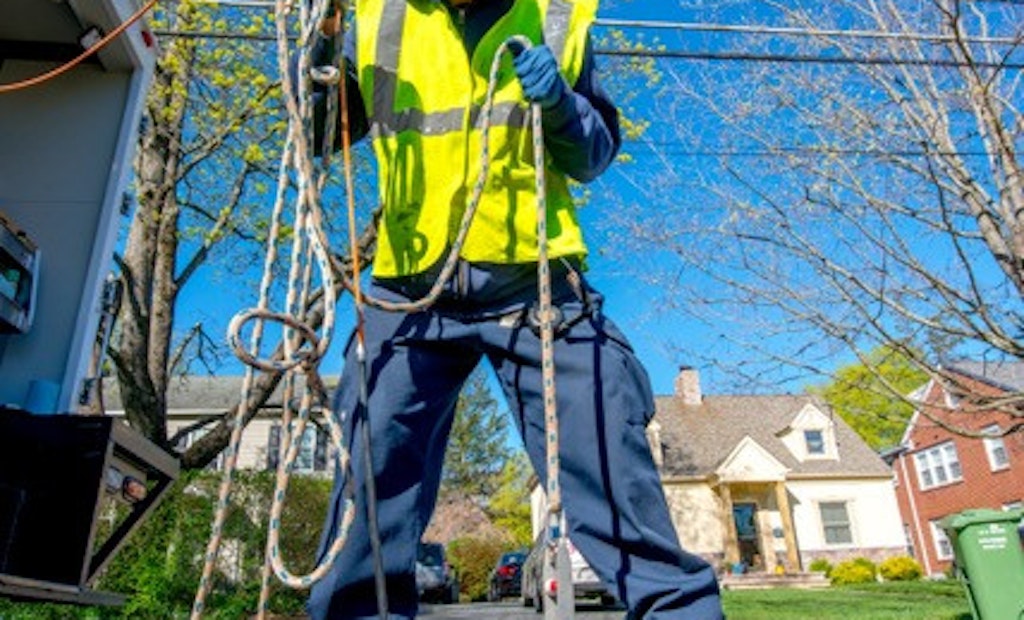Interested in Inspection?
Get Inspection articles, news and videos right in your inbox! Sign up now.
Inspection + Get AlertsIf you are trying to meet the increasing demands for infrastructure inspection with the same old workflows and technology, you’re fighting a losing battle. The evolving challenges of sewer inspection require adapting new technologies and methodologies to gain greater efficiencies and better data. Doing so can allow inspectors to prioritize systemwide which lines need the most attention, and to shorten the interval it takes to perform a complete system assessment.
CCTV crawlers gather the most detailed information from a pipe, allowing an operator to pan, tilt and zoom in on pipe features. They are the most commonly used inspection tool in our industry, and the most detailed method for inspecting the internal condition of a sewer. However, they are also the most time-consuming and labor-intensive to operate.
While CCTV crawler inspection is an essential tool in any condition assessment program, many lines don’t need the level of scrutiny a crawler offers. Rapid assessment tools like zoom cameras and video nozzles are ideal front-line tools for screening out such lines. If municipalities incorporate these tools into a three-phase approach to inspection, they can save significant time and money, and maintain more updated information about pipe condition.
Phased Assessment Strategy for Sewers (PASS)
Phase 1: Initial survey with a zoom camera
Zoom survey cameras employ a video camera mounted on a telescopic pole to view deep within pipes from an adjacent manhole, as well as inspect the manhole itself. Zoom cameras don’t replace conventional CCTV inspection, but rather identify exactly which pipes need further investigation. Sewer lines don’t need to be cleaned before a zoom survey, and therefore can be assessed quickly by a single operator.
Municipalities that use zoom survey technology as a part of their sewer inspection strategy have realized speed and costs benefits over CCTV-only inspection. Also, zoom cameras are safer and less disruptive because they reduce the work crew’s exposure to traffic.
During Phase 1, you survey all your sewer pipes with a zoom camera. When defects are observed or the view is obstructed in a particular pipe, flag it for the next inspection phase. Otherwise, mark it as PASS.
Phase 2: Post-cleaning assessment with a video nozzle
Cleaning is an important part of pipe maintenance, and an essential prerequisite for CCTV inspection. Any line that doesn’t pass Phase 1 needs to be cleaned to remove the grease and debris that interfere with a CCTV crawler. In many cases these obstructions are the only problem with the pipe, and a quick post-cleaning video nozzle assessment can confirm that no additional crawler CCTV is needed.
.jpeg) A video nozzle is a water-propelled HD camera that threads on the jetter hose, allowing rapid collection of detailed visual information about a pipe’s condition post-cleaning.
A video nozzle is a water-propelled HD camera that threads on the jetter hose, allowing rapid collection of detailed visual information about a pipe’s condition post-cleaning.
On average, only 65 percent of pipes surveyed with a zoom camera will require additional attention, which starts with cleaning. Once the cleaning crew finishes cleaning the line they can quickly assess if any defects are present in the sewer lines and make a recommendation as to whether the pipe segment should be thoroughly inspected using a CCTV crawler, or marked as PASS.
Phase 3: Detailed inspection with a CCTV crawler
For lines where a Phase 2 video nozzle inspection reveals pipe defects, a final CCTV camera crawler inspection is warranted. Crawler inspections reveal the highest level of detail, which is needed to prioritize and plan for maintenance activities like lining, grouting and open-trench replacement.
CCTV inspections are essential for identifying and characterizing breaks, root intrusions, leaking water and other kinds of deterioration. No inspection program can operate without a CCTV crawler because of its unique ability to fully understand the problems inside a sewer pipe.
Using the PASS method, zoom camera and video nozzle surveys will have already pinpointed which pipes will benefit from a CCTV inspection. These pipes can now be thoroughly inspected and given the attention they need. Typically, only about 25 percent of pipes in a collections system need a detailed CCTV inspection. With an average cost of $1.25 per foot for CCTV crawler inspection, it is imperative to inspect pipes with this method only as required.
PASS with flying colors
Let’s face it: Inspecting sewers is no easy job. Not only are sewer departments responsible for making sure underground pipelines are operating optimally, they must do so with diminishing resources. It’s a challenging situation, but one that can be vastly improved with the PASS method. PASS reduces costs and improves the response time for inspection, all without compromising visibility on overall system condition. And once you channel assessment resources to the pipes that need them most, you’re making the best possible impact on the infrastructure, the environment and the community you serve.
This post is an excerpt from the white paper "Phased Assessment Strategy for Sewers." To read the unabridged version or to download the infographic, visit www.envirosight.com/pass.





